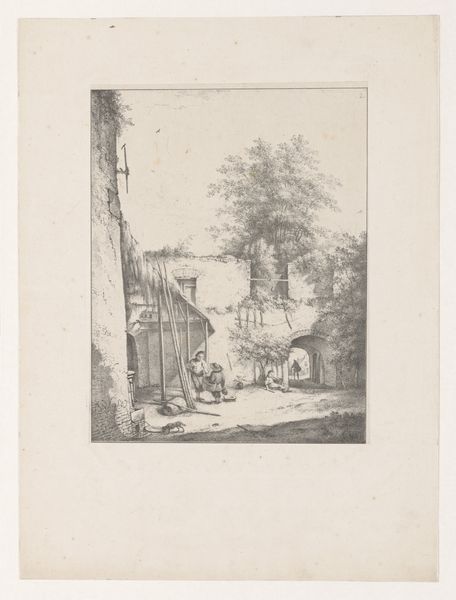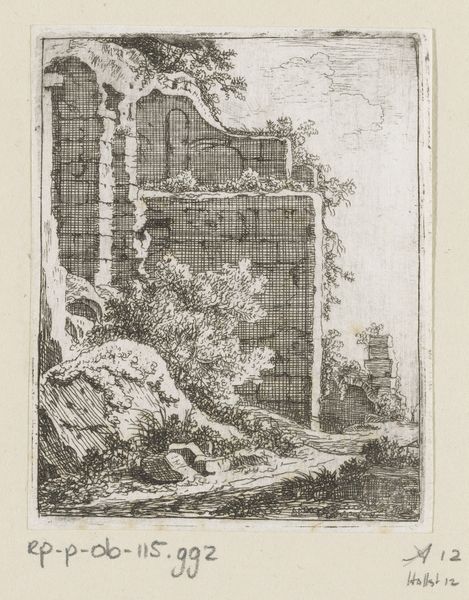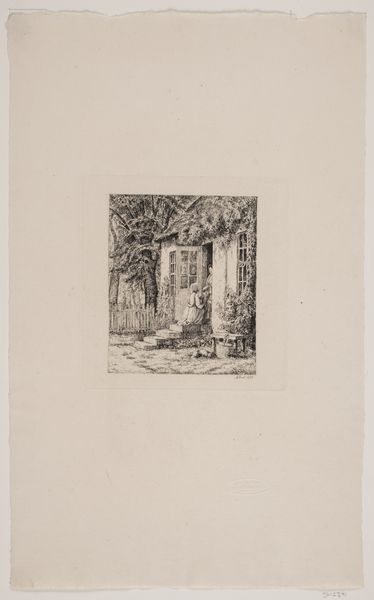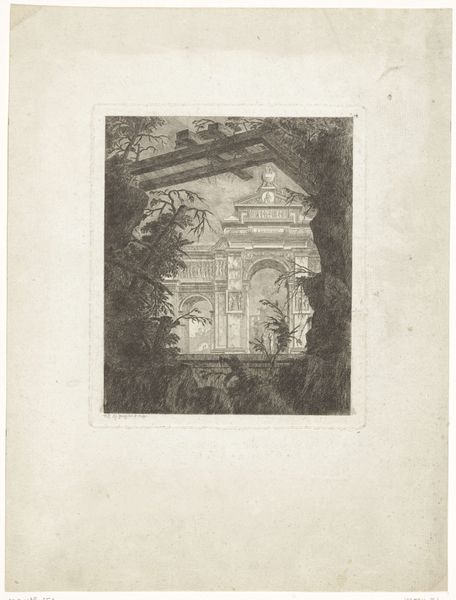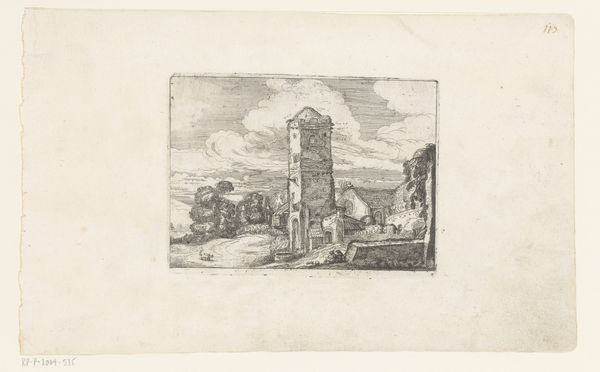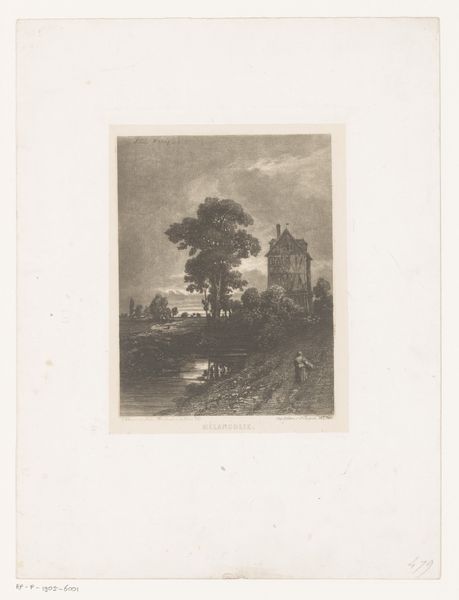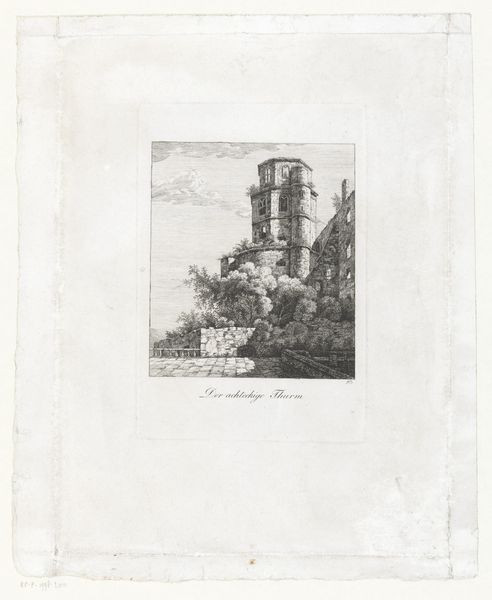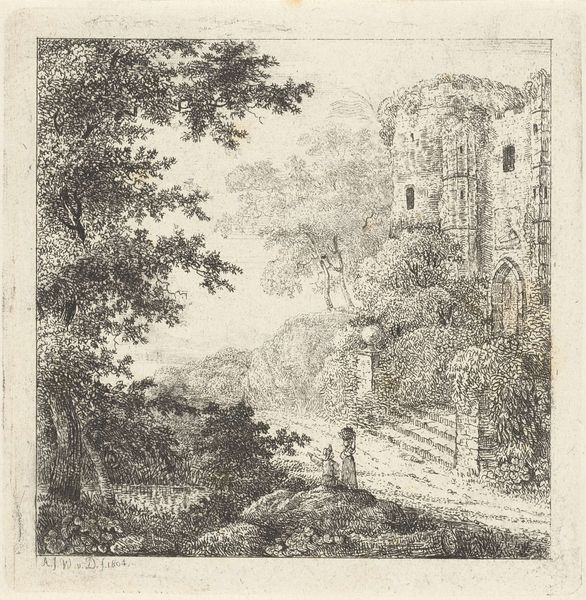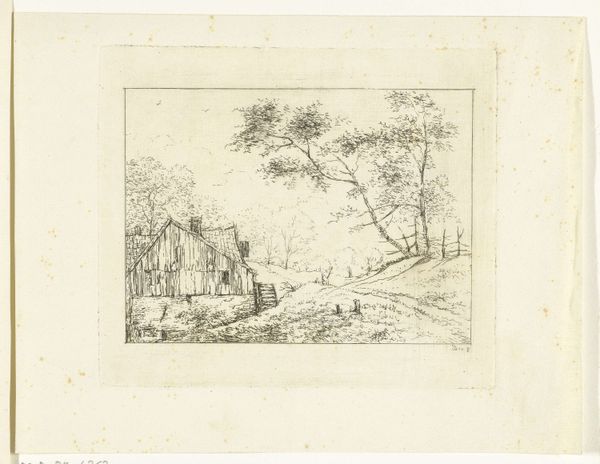
print, etching, paper
# print
#
etching
#
landscape
#
figuration
#
paper
#
15_18th-century
#
genre-painting
#
history-painting
Dimensions: height 232 mm, width 183 mm
Copyright: Rijks Museum: Open Domain
Editor: This is "Vrouw met kinderen bij een ruïne van een monument," or "Woman with Children at a Monument Ruin" by Franz Edmund Weirotter, from 1760. It's an etching on paper. It’s quite striking, this contrast between the timelessness of the monument and the everyday life of the people beside it. What do you see in this piece? Curator: I see the politics of imagery playing out in miniature. The ruin represents a classical past, a symbol of power and empire. But its decayed state hints at the transience of such power. And placing a genre scene, a 'snapshot' of ordinary people, directly in front prompts us to question whose stories are typically centered in history, and by whom? Editor: So, the artist is intentionally juxtaposing these grand historical narratives with the lives of everyday people? Curator: Exactly. And consider where something like this would be viewed in 1760. It's a print; it would be relatively accessible, unlike a massive history painting commissioned for a palace. Prints allowed for broader circulation of ideas. By putting this intimate family scene against the backdrop of fading grandeur, the artist makes the past less remote. Does the woman by the ruin seem aware of it? Does she have any agency in relation to the historical relic that may be larger than her experience? Editor: That makes me think about the accessibility of art back then. Making a statement, but who's able to receive it? Maybe this touches on the purpose and meaning we associate with art that may be inherently unavailable for certain groups. I never thought of prints in that way before. Curator: It is this democratizing aspect of prints which brings visibility and invites interpretation from a greater audience. Editor: That's such an insightful way to look at this print. I really appreciate learning about this from you. Curator: It has been a pleasure to share with you. Seeing through different lenses certainly expands my thinking about art too!
Comments
No comments
Be the first to comment and join the conversation on the ultimate creative platform.

